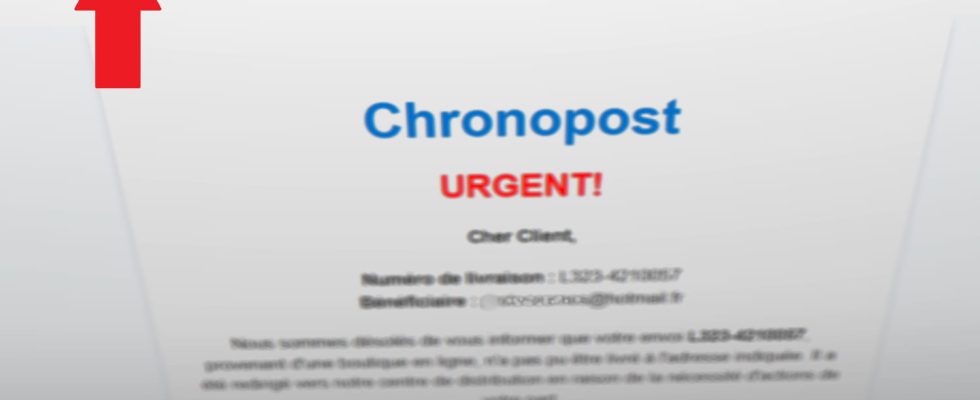Have you received a strange email in your inbox? Before you do anything, double-check this little detail that will tell you whether it’s from a reputable shipper or a scammer looking to rip you off.
Like everyone else, you probably receive spam at your email address. Indeed, despite the detection measures put in place by Internet access providers and messaging services (Gmail, Outlook, Orange, Yahoo, etc.), unwanted messages manage to bypass the filters to pile up by the dozen in your inbox. Most are automatically filed in a special folder (Spam or Junk), but others manage to slip into your main mailbox, among legitimate messages.
Most often, these are commercial messages from companies you do not know, but who have purchased your email address from companies of which you are a customer. Annoying, but not dangerous, messages that offer you promotions, competitions, gifts, etc.
On the other hand, be wary of other messages, particularly alarmist emails. This is phishing, this technique which consists of usurping the identity of an official organization or a company in order to scam you. The trap is as simple as it is effective: the message, which uses the graphic codes of the alleged sender, informs you of a problem with an order, a subscription or any other anxiety-provoking reason. And it invites you to follow a link to resolve it as quickly as possible. A link that you should definitely not click on, because it takes you to a booby-trapped web page, which looks like an official page, but which is only used to retrieve your personal information (account ID, password, postal address, contact details). banking, credit card number, etc.), or even, in the worst case, to make you pay immediately for a transaction or delivery.
Of course, it’s easy to detect this kind of message when it comes from a company you’ve never dealt with. But it’s more tricky if it seems to come from a company of which you are a customer or from an administration. Because not only is its appearance very similar to that of a legitimate email, but, moreover, the message encourages you to act very quickly, urgently, without thinking. And it is by playing on these two tables that crooks manage to rob their victims.
Also, if you have any doubt, the first thing to do is to carefully examine the sender’s email address, such as [email protected]. It does not always appear, but simply click in the header at the top of the message to display it in plain text. Focus especially on the domain name, the part after the @. If it matches the company name, that’s a good sign. Otherwise, if it is @gmail.com, for example, or another messaging service unrelated to the company name, then it is indeed of a scam. Even more so if the first part of the email address contains the name of an individual, or if it is fanciful. Some real examples: [email protected] for a message allegedly from La Poste, [email protected] for Chronopost, [email protected] for Vinted, [email protected] for the ANTS fines service , etc. No relation to the alleged senders!
Worse still, some particularly clever scammers buy domain names that look very similar to official names, except for a few details: added or inverted letters (amazone.fr, fanc.com,espace-iabanquepostai.fr, impotpolitique.fr, levoncoin .fr, amleli.fr, etc.) relying on reading errors. Some go so far as to use a capital i to replace a lowercase l, or a capital O in place of a zero. A technique called typosquatting which requires special attention. So be wary, even when the address looks a lot like a legitimate address!
The good reflex to have, when you receive a suspicious message appearing to come from a company or a service of which you are really a customer, is to go manually to your customer area, without following the link mentioned in the email, to check if a you have an official message.

